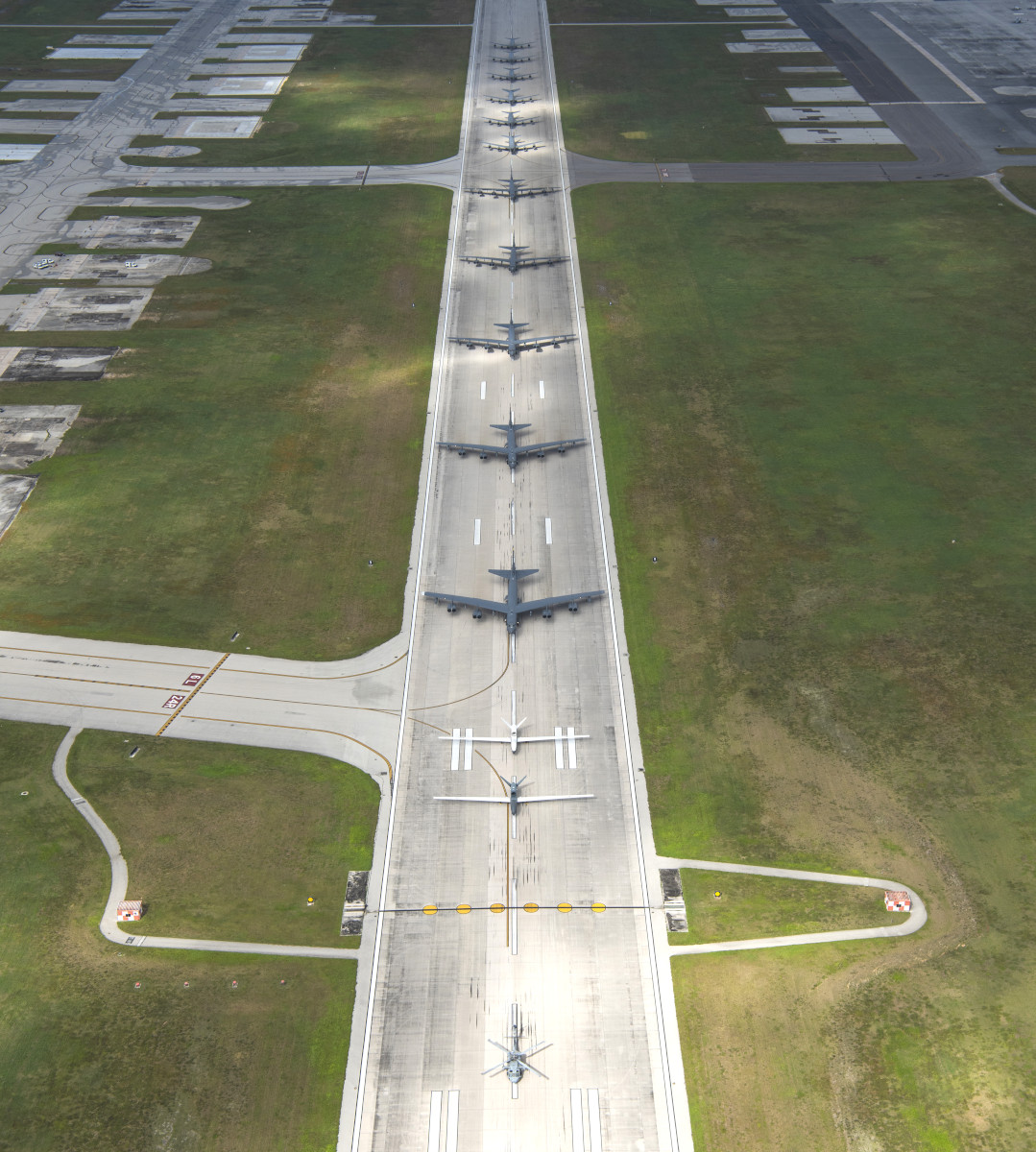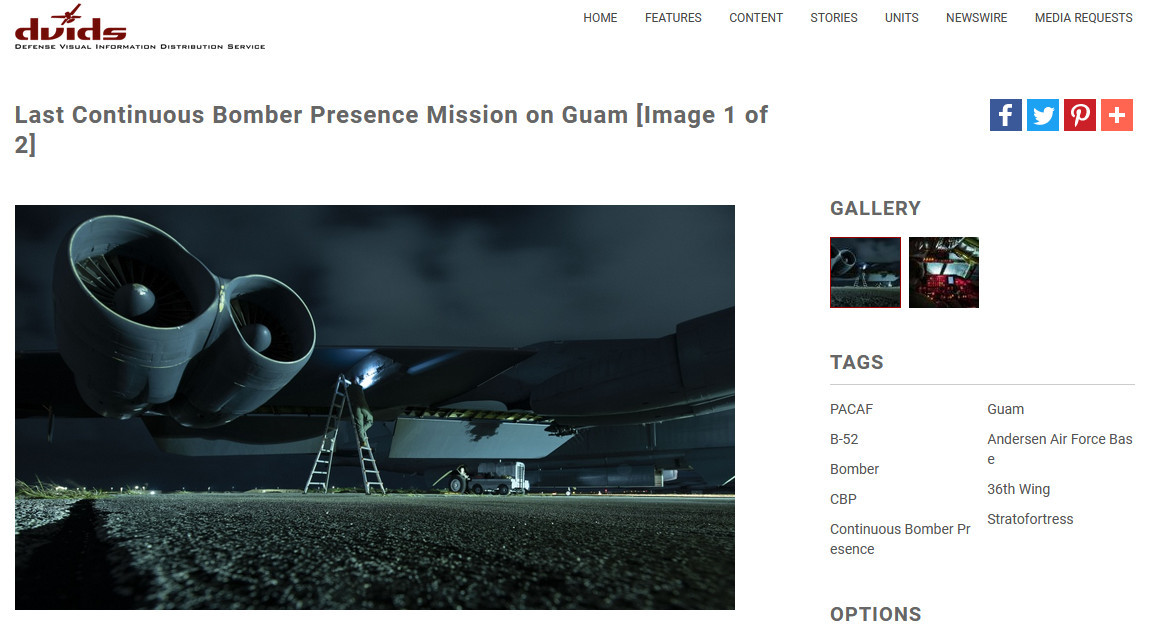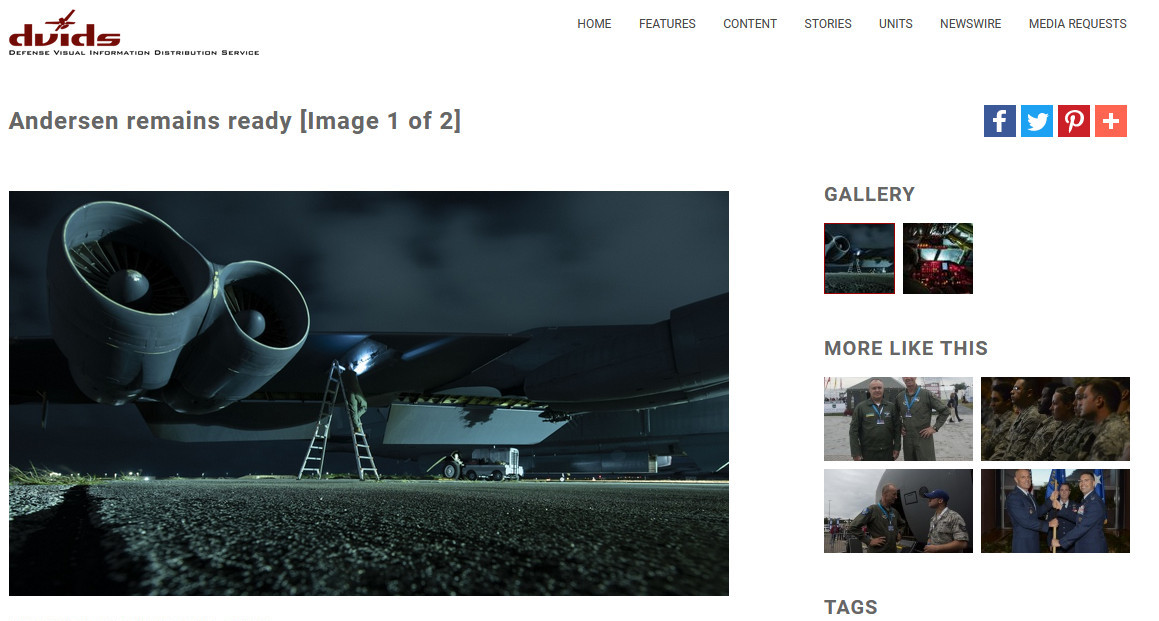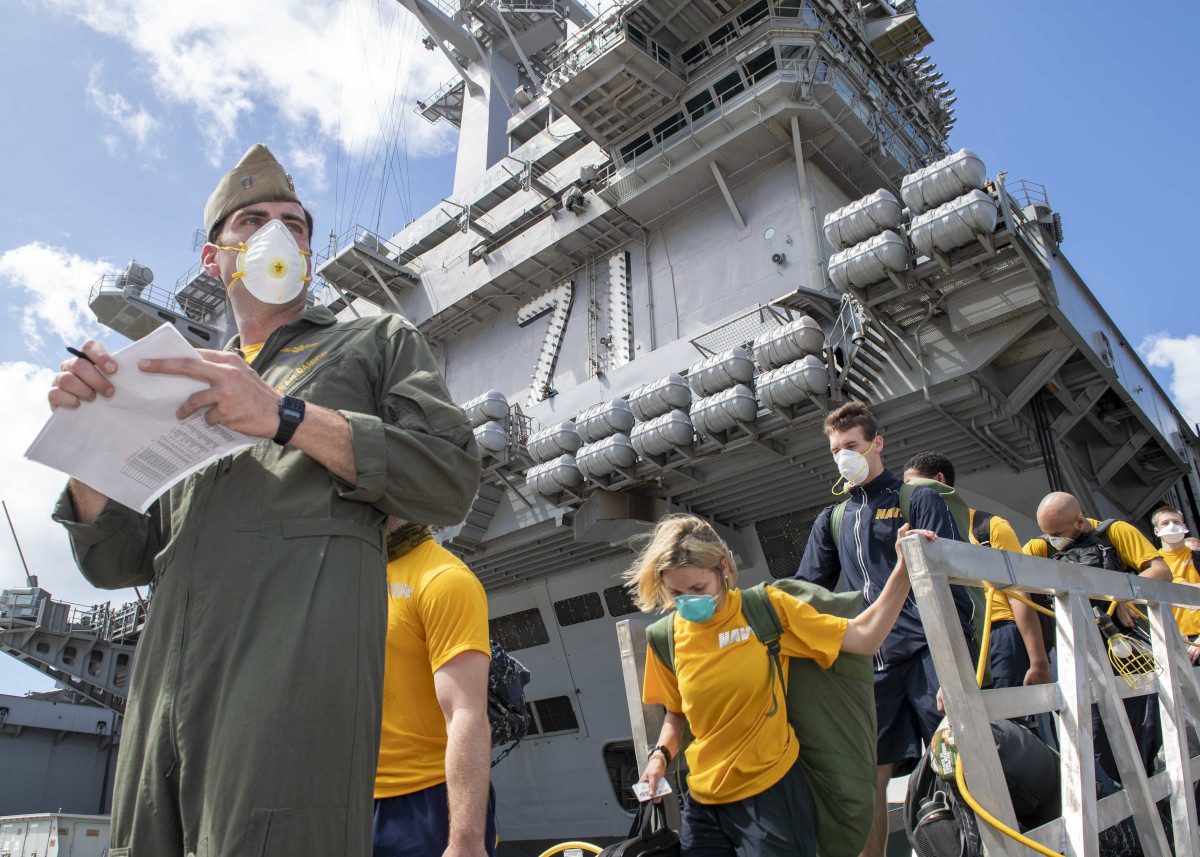The U.S. Air Force has ended its uninterrupted rotations of bombers to Andersen Air Force Base on Guam, which have been ongoing since 2004, as it shifts to a less predictable concept of operations. Five B-52H Stratofortresses left yesterday with no replacement aircraft in place, bringing an end to what the service had called the Continuous Bomber Presence Mission. This notably came just days after the bombers took part in a massive “elephant walk” readiness drill that also involved six KC-135R aerial refueling tankers, an RQ-4B Global Hawk drone, as well as a U.S. Navy MQ-4C Triton drone, and an MH-60S Sea Hawk helicopter, which was seen as a significant statement of American resolve aimed China.
Online aircraft tracker and friend of The War Zone @AircraftSpots spotted the five B-52Hs leaving Guam for their home at Minot Air Force Base in North Dakota on Apr. 16, 2020. The bombers used the very pointed callsign “SEEYA” for the transit.
“In line with the National Defense Strategy, the United States has transitioned to an approach that enables strategic bombers to operate forward in the Indo-Pacific region from a broader array of overseas locations, when required, and with greater operational resilience, while these bombers are permanently based in the United States,” U.S. Air Force Major Kate Atanasoff, a U.S. Strategic Command (STRATCOM) spokesperson, confirmed in a statement to The War Zone. “U.S. strategic bombers will continue to operate in the Indo-Pacific, to include Guam, at the timing and tempo of our choosing.”
Starting in 2004, the Air Force began deploying B-52s, as well as B-1B Bone supersonic bombers and B-2A Spirit stealth bombers, for six-month stints to Andersen on Guam as part of the Continuous Bomber Presence Mission. As its name indicates, the concept of operations was meant to ensure that at least one task force of long-range heavy bombers was in position at the immensely strategic base at all times to respond to potential contingencies in the Pacific Region. The bombers on Guam had been a cornerstone of U.S. power projection and deterrence capabilities to the region since then.

The service had indicated earlier this month that it was interested in switching to shorter duration bomber deployments to Guam. At the same time, the U.S. military, as a whole, has also increasingly adopted a concept of operations known as Dynamic Force Employment, which aims to make major deployments less predictable in order to keep potential opponents, such as China and Russia, on edge. It also serves to demonstrate America’s ability to project force around the world on short notice and with little advance warning for adversaries.
As part of this push, the Air Force has been experimenting with sending bombers to new or less common deployment locations in the Pacific, as well as in Europe. In 2018, B-2A Spirit stealth bombers notably made their first-ever visit to Wake Island, albeit briefly, during a longer duration deployment to Joint Base Pearl Harbor-Hickam on the Hawaiian island of Oahu.
There had been some indications that the end of the Continuous Bomber Presence Mission on Guam was imminent in the past week or so already. On Apr. 14, PACAF posted a pair of B-52H pictures on the official Defense Visual Information Distribution Service (DVIDS) website, with the title “Last Continuous Bomber Presence Mission on Guam.” Sometime after that, the title was changed to “Andersen remains ready,” which was also used to describe the photos of the elephant walk on Apr. 13.


On top of that, a tweet from U.S. Strategic Command’s official Twitter account on Apr. 16 said “whether they’re launched from Louisiana, Guam, or the U.K., long-range strategic bombers have and will remain a bedrock of our deterrence!” and included the hashtag “#DynamicForceEmployment.”
It’s also worth noting that President Donald Trump had criticized the cost of operating bombers on Guam, especially as part of exercises over and around South Korea, thousands of miles to the north.
“We fly these massive bombers in from Guam. And when I first started, a certain general said, ‘Oh, yes, sir, we fly them in from Guam. It’s right next door.’ Well, ‘right next door’ is seven hours away,” Trump said on Feb. 28, 2019 during a press conference in Hanoi, Vietnam, following an abortive summit with North Korean leader Kim Jong Un. “And then they come and they drop millions of dollars of bombs, and then they go back and — but we would spend — I mean, we spent hundreds of millions of dollars on those exercises, and I hated to see it. I thought it was unfair.”
Still, it is hard to overstress how significant a development this is, despite STRATCOM’s view that it will not impact its ability to employ bombers to respond to contingencies in the region. The potential for major crises to erupt in the Pacific remains very real.
For instance, there are indications that North Korea is continuing to work on expanding and improving its nuclear arsenal and associated delivery platforms. The regime in Pyongyang has been routinely conducting tests of new and improved conventional weapons for months now, as well. In addition to supporting the aforementioned exercises with South Korea, bombers launched from Guam have been a major component of show-of-force and deterrence operations aimed at North Korea in the past.

The COVID-19 pandemic has also inflamed tensions between the United States and China, which had already been simmering over a host of issues, including Beijing’s extensive territorial claims in the South China Sea, U.S.-Taiwan relations, U.S. government support for pro-democracy protesters in Hong Kong, and long-standing trade and other economic disputes, among others. There have been a number of tit-for-tat engagements between U.S. and Chinese military forces, particularly in the South China Sea, in recent years, including a near-collision between a U.S. Navy destroyer and a People’s Liberation Army Navy (PLAN) destroyer in 2018 and incidents involving potentially dangerous jamming and lasing of American military aircraft in the region.
Chinese security forces have also aggressively challenged other foreign military aircraft and civilian ships in the process of asserting its claims in the South China Sea. Just on Apr. 9, the Pentagon issued a statement criticizing Chinese authorities over an incident in which a China Coast Guard vessel rammed and sunk a Vietnamese fishing boat near the Paracel Islands, one of a number of hotly contested island chains in the South China Sea.
B-52H bombers flying from Guam, among other U.S. military aircraft, have flown patrols in the South China Sea as part of so-called Freedom of Navigation Operations, or FONOPS, to challenge Chinese claims.
The departure of the B-52Hs from Guam also comes as questions have been raised about the U.S. military’s ability to project power in the Pacific in light of the sidelining of the Nimitz class aircraft carrier Theodore Roosevelt due to a major COVID-19 outbreak among its crew, which has caused one fatality so far. That ship is now stuck pier side in Guam indefinitely, which has forced the Navy to pull a carrier from a deployment to the Middle East, where U.S. tensions are also high with Iran, and redirect to the Pacific.

For its part, China recently sent one of its carriers, the Liaoning, on a mission that took it near both Japan and Taiwan. Two destroyers, a pair of frigates, and a supply ship accompanied Liaoning on the voyage, demonstrating the PLAN’s own increasing ability to conduct carrier operations.
“We will maximize all opportunities to train alongside our allies and partners to build interoperability and bolster our collective ability to be operationally unpredictable,” Major Atanasoff, the STRATCOM spokesperson, added in her statement. “We continually reassess our overseas posture and adjust to meet the requirements of the Joint Force and combatant commanders as well as our treaty commitments.”
The exact ramifications of the decision to end the Continuous Bomber Presence Mission remain to be seen, but it’s undeniable that the U.S. military’s force posture in the Pacific region has just undergone a major shift.
Contact the author: joe@thedrive.com

